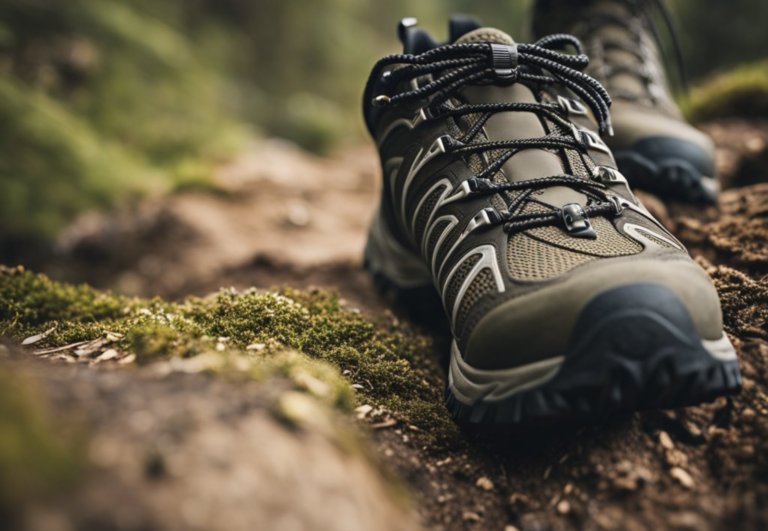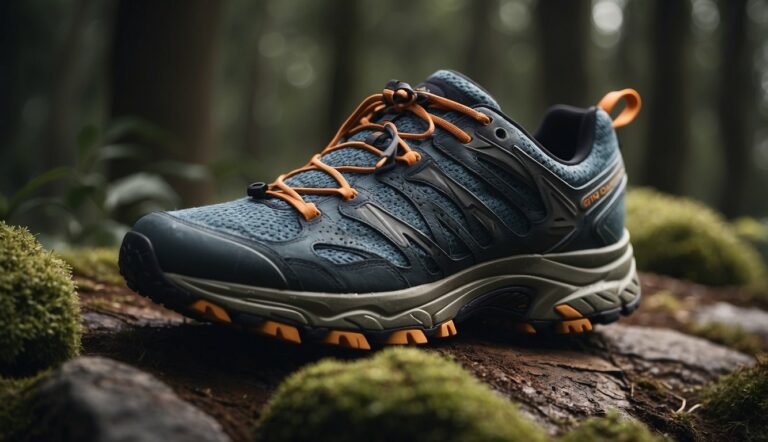6 Reasons NOT to Run in Air Force Ones (They Aren’t Even Running Shoes)
Nike Air Force Ones are a popular shoe and the classic kicks can be seen on everyone from athletes to celebrities to teenagers at the mall. Given their popularity – and the importance of maintaining the iconic white upper – you might wonder if they’re good for anything other than hitting the town. For example, can you run in them?
You can run in Air Force Ones but they are a bad choice for running as they were initially designed as basketball shoes. Because of this, Air Force Ones tend to be much heavier than a modern running shoe and offer very little flexibility and limited cushion. Additionally, the heel drop is not correct for a runner’s stride and could lead to injury.
Keep reading to learn more about why Nike Air Force Ones are not an appropriate running shoe, as well as what you should look for in a running shoe.
Is it okay to run in Nike Air Force Ones?
The Air Force Ones were created in 1982 to play basketball and were the first basketball shoes to incorporate air technology in their soles.
You should not run long distances in Air Force Ones. Although basketball involves running, the Air Force Ones are designed for running, jumping, and pivoting on an indoor court. The weight of the shoe, its rigid sole, and the lack of heel drop are just some of the reasons you’re better off purchasing a specialized running shoe.
For example, a running shoe should have a deep tread which allows for good road grip. Air Force Ones, however, offer little in the way of tread – by design. The concentric circles at the heel and so-called pivot point at the ball of the foot are specific to its function as a basketball shoe.
Are Air Force Ones considered running shoes?
Air Forces Ones, while often treated as a fashion item, were initially designed as an athletic shoe. Can they be considered running shoes?
Air Force Ones are not generally considered running shoes. They meet several of the requirements of basic running shoes, but not enough to be considered appropriate for long-distance or serious runners.
To see the differences between the Air Force Ones and a modern running shoe, we’ll look at six main criteria:
- Ergonomics and design
- Safety
- Cushion
- Heel drop
- Materials
- Durability
Ergonomics and design
Running shoes are designed to provide comfort and cushioning to a runner depending on the environment.
Average running shoes weigh between 7-12 ounces. Air Force Ones weigh in at 16-24 ounces. Heavy shoes like these aren’t suitable for running, as they expose the runner to injury and discomfort.
Air Force One soles are incredibly thick and are significant contributors to the shoes’ weight. However, this doesn’t necessarily mean that the lightest shoes are the best. It all depends on the runner’s feet and weight. People with wider feet may find it more comfortable to run in Air Force Ones.
Additionally, running shoes often include an arch between the forefoot region and the heel region. This feature supports the feet to prevent injury. Air Force Ones lack this design. Their soles are straight and do not provide any support for running.
Safety
The grip of running shoes varies according to the design of the brands. While some may use soft rubber for grip on tracks and roads, others use treads for trails and difficult terrains. This ensures that the runner is steady all the way while running.
An Air Force One is smooth with carved lines in the soles to aid in sudden stops and pivots while playing basketball. Although it has a sufficient grip for walking purposes, it is a different story when it comes to running.
Running without proper grip will lead to slipping or injury.
Cushion
Running shoes are designed to provide a cushioned effect while running. This prevents the runner from having aches in the joints while running long distances. However, that doesn’t mean more is better when it comes to cushioning.
The most effective and appropriate cushioning is designed in the midsole, where instead of the soles being ridiculously maximal, the midsoles instead absorb the impact and then release the energy to the runner to aid in the spring of the foot during the running motion.
When runners use soles that provide too much cushion, they prevent the foot from going through its natural spring course. The soft impact you feel when landing is not necessarily beneficial to your joints.
When we analyze Air Force One, we see that this is precisely the technology the Air Force One was based on. In this respect at least, Air Force Ones meet the criteria for a running shoe.
Heel drop
The heel drop is the height of a shoe. It is the inclination the shoe provides from the heel to the toe.
The heel drop in running shoes is usually more than the heel drop in an Air Force One. The heel drop for a standard running shoe ranges from 8mm-10mm, whereas the heel drop of the AF1 appears to be relatively low.
It is not necessarily the more, the better when it comes to heel drop because it all depends on the running style of the person using the shoe. Therefore, although the heel drop of an Air Force One is significantly less than that of a running shoe, we can not say that it is a reason to disqualify it as a running shoe.
Materials
The materials used in manufacturing a running shoe are generally lighter than those used in Air Force One.
The top part of a running shoe is made with mesh-like material that is usually breathable, or breathable polyester, while the upper of an Air Force One is made with synthetic leather. When running, you should not experience any hindrance on the upper part of your feet. Flexibility is also a crucial factor when choosing running shoes because of the feet’s mechanical movement during the running process.
The material used also shows the level of comfort a running shoe gives the feet in contrast with the Air Force One. The midsole of most running shoes is made with Ethyl Vinyl Acetate (EVA). The sole of an Air Force One is made with hard rubber, which is unsuitable for running.
Running in stiff shoes is extremely painful. It can result in cuts, blisters, or even a twisted ankle.
Durability
Generally, the durability of running shoes is measured in distance rather than time. For most (good) running shoes, expect 300-500 miles.
The materials used in manufacturing the Air Force One are tougher and more durable than those used in running shoes generally. This makes it a rugged shoe that can take a beating. An Air Force One can serve you for years to come with proper care.
That being said, there is no information available on what kind of wear and tear a pair of Air Force Ones will show after 300 miles of asphalt.
What kind of activities do Air Force Ones handle best?
Although the Air Force Ones are not suitable for running, they are by no means useless.
Currently, they are primarily seen as a fashion shoes due to their timeless design and immediate recognizability.
Both street and professional basketball players still use them. Taking short walks in your Air Force One alone, with friends, or with your dog is very comfortable.






